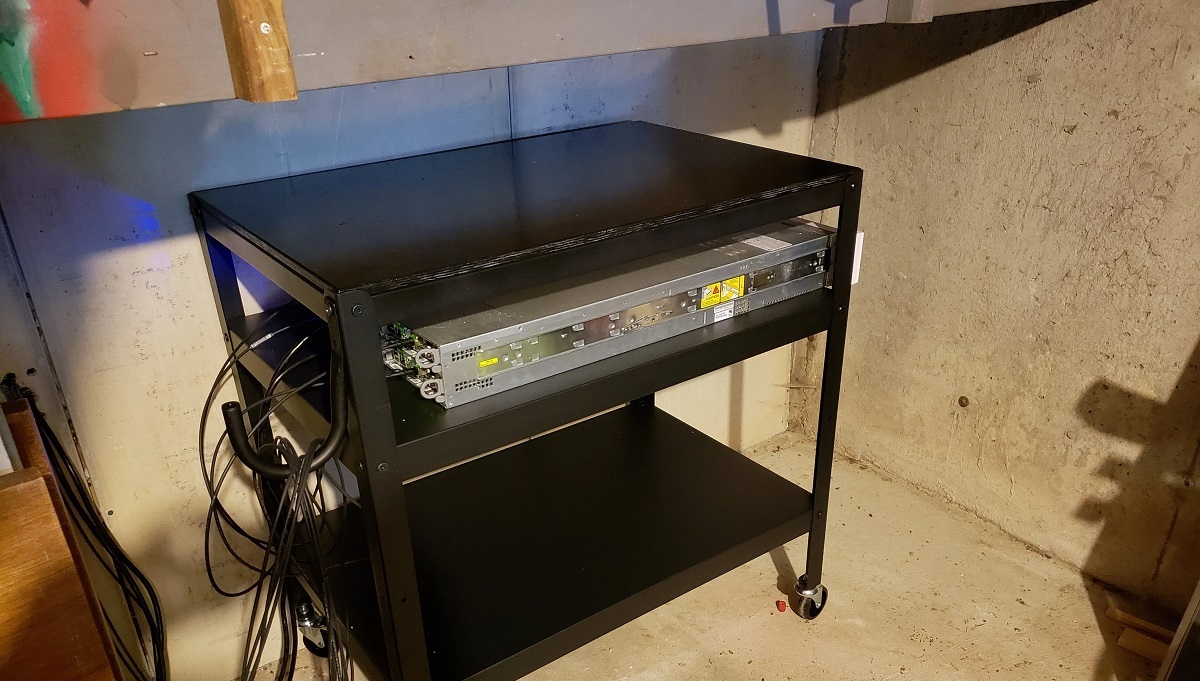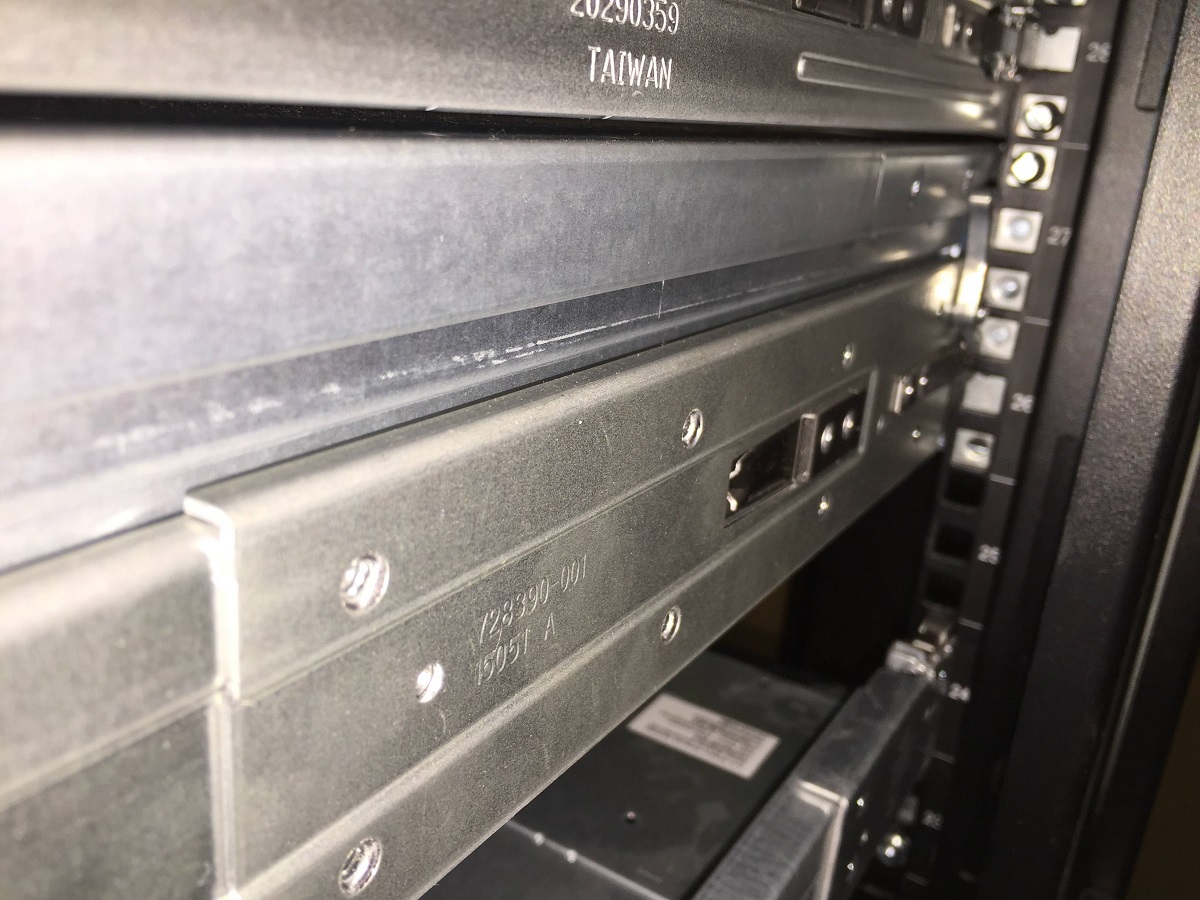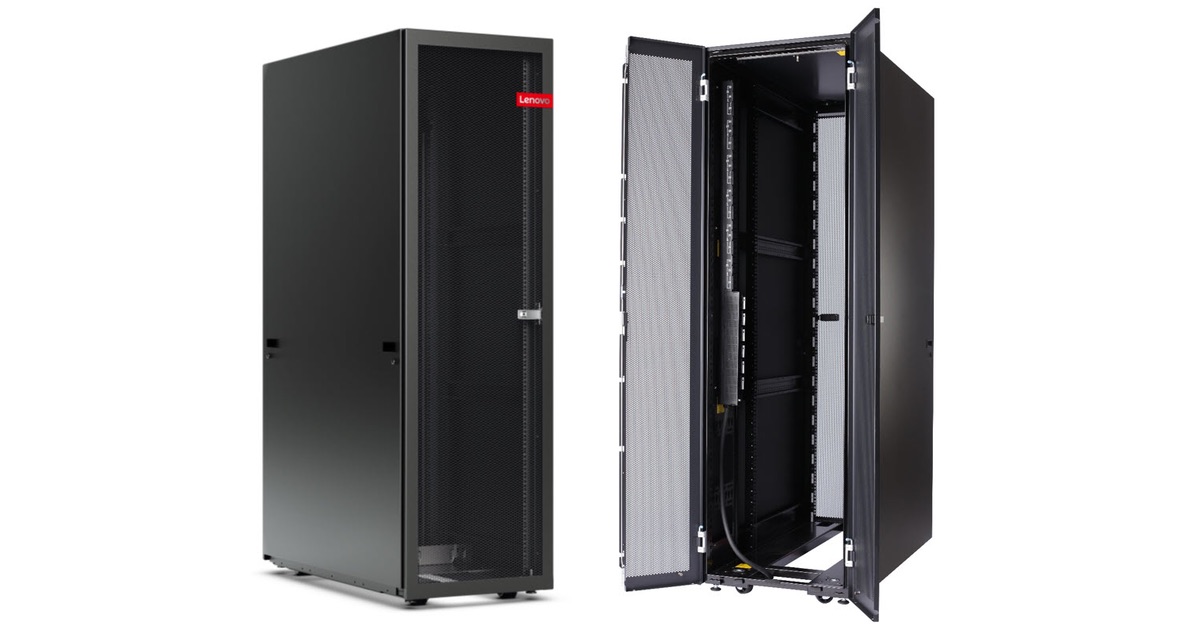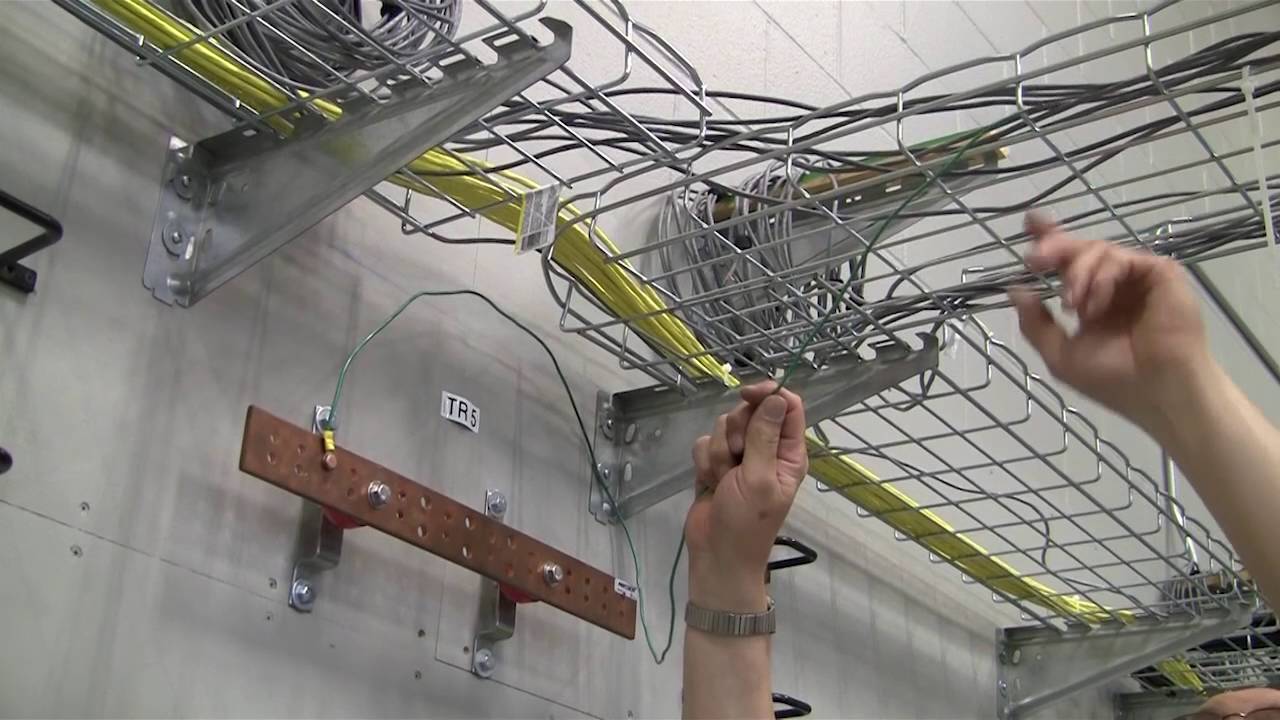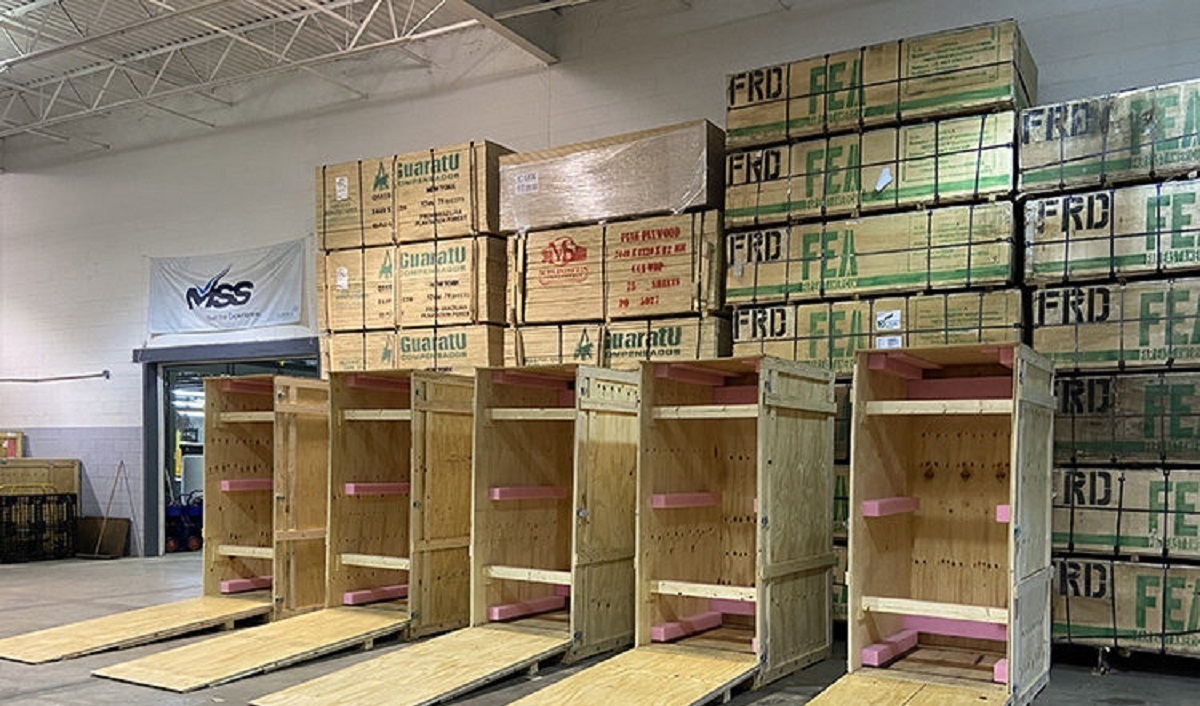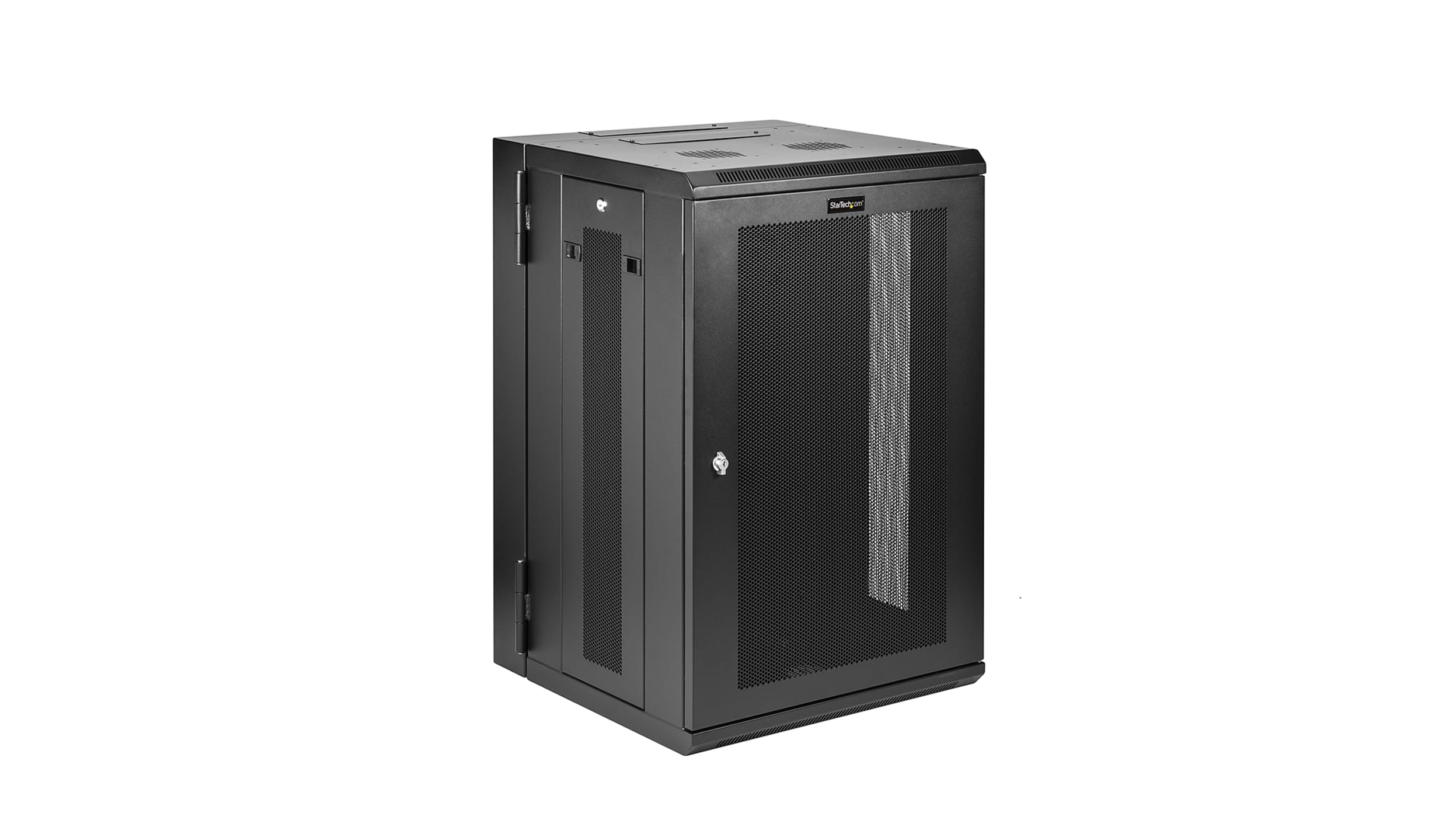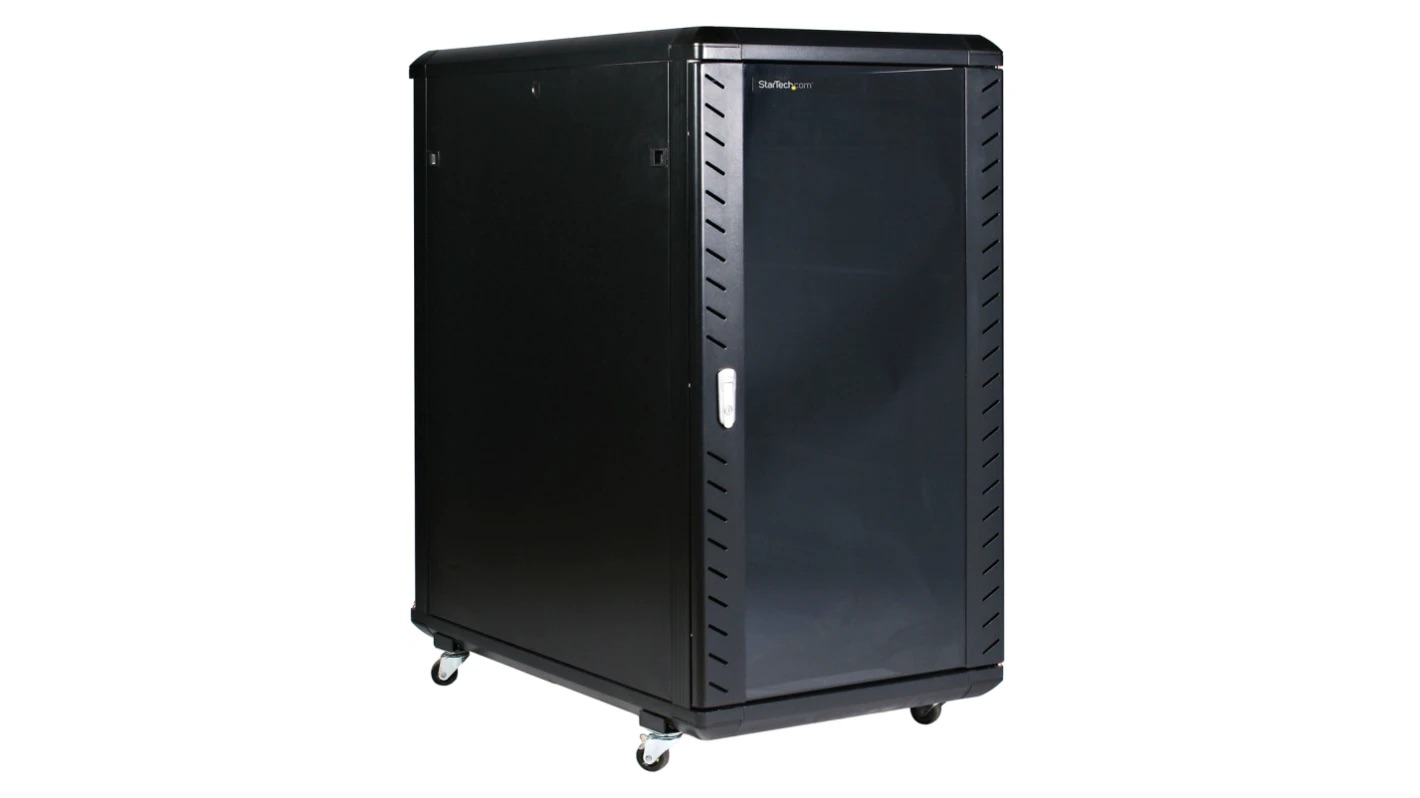Introduction
When it comes to moving a server rack, careful planning and preparation are essential to ensure a smooth and successful process. Server racks can be heavy and filled with delicate equipment, and any mishandling can lead to costly damage or downtime. Whether you’re relocating your server room to a new location or simply rearranging the equipment within your existing space, following the right steps will help you move your server rack safely and efficiently.
Before diving into the details, it’s important to note that moving a server rack is a task that should be handled by trained professionals who have experience in handling sensitive equipment. If you don’t have the expertise or resources within your organization, consider hiring a professional IT relocation service to assist you. They will have the necessary tools, equipment, and knowledge to ensure a successful move.
This article will guide you through the process of moving a server rack, providing you with tips and best practices to avoid any potential risks. From planning and preparation to disassembling and reassembling the rack, we’ll cover everything you need to know to keep your equipment and data safe throughout the moving process.
Planning and Preparation
Before you can start moving your server rack, it’s crucial to spend some time on planning and preparation. Proper planning will help you identify potential challenges and minimize any disruptions to your operations. Here are the key steps to follow:
1. Assess the new location: Examine the new space where the server rack will be placed. Take measurements to ensure that it will fit properly, and consider factors such as ventilation, power supply, and accessibility for maintenance.
2. Create a detailed inventory: Document all the equipment currently housed in the server rack. Take pictures and label each component. This will help you keep track of everything during the move and ensure that nothing gets lost or damaged.
3. Develop a timeline: Set a realistic timeline for the entire moving process. Break it down into smaller steps, such as disconnecting cables, disassembling the rack, and reconnecting equipment at the new location. Allocate sufficient time for each task to avoid rushing or causing delays.
4. Notify stakeholders: Inform all relevant parties, including IT staff, management, and users, about the upcoming server rack move. Provide them with the necessary information and instructions to minimize any disruption to their work.
5. Backup your data: Before moving the server rack, it’s crucial to perform a full backup of your data. This ensures that even in the event of accidental damage or loss during the move, you can easily restore your systems and prevent data loss.
6. Coordinate with vendors: If your server rack contains equipment provided by third-party vendors, make sure to communicate with them ahead of time. Inform them about the relocation plans and seek their guidance on any specific requirements or precautions to take while moving their equipment.
7. Allocate resources: Ensure that you have the necessary resources, including manpower, moving equipment, and protective gear, to safely transport the server rack. Consider whether you need to involve a professional moving company or if your IT team can handle the job.
By carefully planning and preparing for the server rack move, you’ll be able to minimize disruptions, ensure the safety of your equipment, and make the transition as smooth as possible.
Gathering the Necessary Tools and Equipment
Before you can begin moving your server rack, it’s crucial to gather all the necessary tools and equipment to ensure a safe and efficient process. Having the right tools at hand will make the disassembly, transportation, and reassembly much easier. Here are some essential tools and equipment to gather:
1. Screwdrivers: Different sizes and types of screwdrivers will be required to remove and secure screws on the server rack and equipment. Make sure you have both flathead and Phillips-head screwdrivers in your toolkit.
2. Cable management tools: To keep cables organized and prevent them from tangling or getting damaged during the move, consider using cable ties, Velcro straps, or cable management panels. These tools will help you maintain order and ease the reconnection process later on.
3. Labeling materials: Prepare labeling materials such as colored tape, markers, or labels to clearly mark cables, equipment, and components. This will prevent any confusion during disassembly and make it easier to reconnect everything correctly at the new location.
4. Moving blankets and padding: Protecting your server rack and equipment during transportation is crucial to prevent any damage. Obtain moving blankets, bubble wrap, or foam padding to wrap delicate components and provide cushioning for added protection.
5. Dollies or hand trucks: Investing in a sturdy moving dolly or hand truck will make it much easier to transport the heavy server rack. Ensure that the dolly can handle the weight and dimensions of the rack and has features such as straps or fasteners to secure it during transportation.
6. Anti-static tools: When handling sensitive electronic equipment, it’s essential to minimize the risk of static electricity damage. Use anti-static wristbands, mats, and grounding cables to discharge any static buildup and protect your equipment from potential harm.
7. Toolkits and tool cases: Keep all your tools organized and easily accessible by using toolkits or tool cases. This will prevent any delays or frustration caused by searching for the right tool when you need it.
By gathering the necessary tools and equipment beforehand, you’ll be well-prepared to tackle the task of moving your server rack. Remember to properly store and secure these tools after use, as they will come in handy during the reassembly process as well.
Clearing the Area
Before you begin the process of moving the server rack, it’s important to clear the immediate area where the rack is located. Removing any obstacles and creating a safe working environment will help prevent accidents and ensure a smooth move. Here are the steps to follow:
1. Remove any furniture or obstructions: Clear the surrounding area of any furniture, equipment, or other items that may hinder your ability to access and move the server rack. Ensure there is enough space to maneuver the rack without causing any damage to the items around it.
2. Secure loose cables: Carefully gather and secure any loose cables that are not attached to the server rack. This will prevent them from getting tangled or causing tripping hazards during the moving process. Use cable management solutions such as ties or Velcro straps to keep them organized.
3. Ensure proper ventilation: Check that the area where the server rack is located has adequate ventilation. Make sure there is sufficient airflow to prevent overheating of the equipment during the move. If necessary, temporarily redirect or remove any items that may block the airflow.
4. Protect sensitive areas: Identify any sensitive areas or equipment in proximity to the server rack and take appropriate measures to protect them. For example, cover nearby computer screens or delicate devices with protective coverings or move them to a safe location to avoid accidental damage during the relocation process.
5. Clear pathways: Create clear and unobstructed pathways from the current location of the server rack to the exit point. Remove any obstacles such as loose wires, carpeting, or debris that may impede the smooth movement of the rack and pose safety risks.
6. Communicate with staff: Inform your team members or anyone else working in the area about the upcoming server rack move. Ensure they are aware of the changes, follow safety protocols, and avoid entering or obstructing the designated workspace during the moving process.
By clearing the area before moving the server rack, you’ll minimize the risk of accidents and create a safe and efficient environment for the relocation. Take the time to double-check the surroundings and prioritize safety throughout this step.
Disconnecting and Organizing Cables
One of the critical steps in moving a server rack is disconnecting and organizing the cables. Properly managing the cables ensures that they won’t get tangled, damaged, or misplaced during the move. Here are the steps to follow:
1. Take pictures of the setup: Before disconnecting any cables, take clear photographs of the current cable configuration. These pictures will serve as a helpful visual reference when reconnecting the cables at the new location.
2. Power down the equipment: Start by powering down and shutting off the equipment connected to the server rack. This prevents any data corruption, electrical accidents, or equipment damage while handling the cables.
3. Label the cables: Use colored tape or labels to clearly mark each cable and its corresponding port or device. This labeling system will make it easier to identify and reconnect the cables correctly during the reassembly phase.
4. Organize cables using cable ties or Velcro straps: Neatly bundle the cables together using cable ties or Velcro straps. Group cables based on their functions or proximity to each other to simplify the reconnection process later on. Avoid using zip ties, as they are difficult to undo or adjust if changes are needed.
5. Document cable connections: Create a detailed document or spreadsheet that lists the cable connections. Include information such as cable types, destination ports, and any specific instructions or considerations for reconnecting the cables at the new location.
6. Safely disconnect the cables: Carefully unplug each cable from its respective port. Gently tug on the connector, not the cable itself, to avoid any damage to the connectors or cables. Keep the cables organized and separate to prevent tangling during the moving process.
7. Secure loose cables: Identify any loose or dangling cables and secure them using cable management solutions such as ties or Velcro straps. Keeping the cables tidy and properly secured minimizes the risk of damage or accidental disconnection during transportation.
8. Label and store detached components: If any components must be disconnected from the server rack, such as expansion cards or storage drives, label and store them in antistatic bags or containers. Keep them in a safe place to avoid losing or damaging these valuable components.
By carefully disconnecting and organizing the cables, you’ll ensure that the reconnection process at the new location is efficient and error-free. Take your time and pay attention to details to prevent any complications or frustrations during this crucial step.
Removing Equipment from the Rack
Once the cables are disconnected and organized, it’s time to remove the equipment from the server rack. This step requires careful handling to avoid any damage to the delicate components. Follow these guidelines to ensure a smooth and safe removal process:
1. Refer to equipment manuals: Review the manuals or documentation provided with each piece of equipment to understand the specific instructions for removal. Different equipment may have unique procedures or precautions that need to be followed.
2. Start from the top: Begin removing equipment from the top of the server rack and work your way down. This prevents any potential damage to lower equipment when removing items from above.
3. Use proper lifting techniques: When removing heavy equipment, use proper lifting techniques to prevent strain or injury. Lift with your legs, not your back, and ask for assistance if necessary.
4. Secure loose components: Take note of any loose or removable components within the equipment, such as hard drives, fans, or expansion cards. Secure these components using appropriate packaging or antistatic bags for safe storage and transportation.
5. Place equipment on padded surfaces: As you remove each piece of equipment, place it on a padded surface or a static-free mat. This helps protect the equipment from any potential impact or static damage during the handling process.
6. Label and document equipment: Label each piece of equipment as you remove it from the server rack to maintain order and make the reinstallation process easier. Additionally, update your inventory list to keep track of the equipment’s location.
7. Inspect for damage: Examine each piece of equipment for any signs of damage or loose connections during the removal process. If you notice any issues, take note of them and address them before reinstalling the equipment.
8. Store equipment securely: Find a secure and organized storage area for the removed equipment. Keep it in a controlled environment to prevent any damage from temperature fluctuations or other external factors.
By following these steps, you’ll be able to remove the equipment from the server rack safely and efficiently. Keep a keen eye for any potential issues or damage and handle the equipment with care to ensure its integrity throughout the removal process.
Securing Loose Components
During the process of moving a server rack, it’s essential to secure any loose components that were detached from the equipment. These components, such as hard drives, fans, or expansion cards, can easily get damaged or lost if not properly secured. Here are steps to effectively secure loose components:
1. Organize and label components: After removing the loose components from the equipment, organize them in a systematic manner. Separate them into individual groups and label them accordingly. This will make it easier to identify and locate the specific components during the reassembly process.
2. Use antistatic bags or cases: Place each loose component in an antistatic bag or protective case. These bags and cases prevent electrostatic discharge and shield the components from potential damage caused by static electricity.
3. Add padding or foam: If the loose components are fragile or susceptible to impact damage, consider adding additional padding or foam inside the antistatic bags or cases. This extra cushioning will provide an added layer of protection during transportation.
4. Secure cables and connectors: Ensure that any cables or connectors that were detached from the loose components are properly secured. Use cable ties, Velcro straps, or twist ties to prevent tangling and maintain organization. Attach them securely to their respective components to avoid misplacement or confusion when reconnecting.
5. Document connections and orientations: Take detailed notes or pictures of how the loose components were connected or oriented within the equipment. This documentation will serve as a valuable reference during the reassembly process, ensuring that the components are reattached correctly.
6. Store components in a safe location: Find a secure and dedicated storage area for the secured loose components. Keep them in a controlled environment to minimize the risk of damage from temperature fluctuations, moisture, or other external factors. Make sure the storage area is properly labeled for easy identification.
7. Transport components separately: If possible, transport the secured loose components separately from the server rack. This helps reduce the risk of damage caused by jostling or impact during transportation. Consider using padded bags or containers to provide an extra layer of protection.
By following these steps to secure loose components, you’ll reduce the risk of damage or loss during the moving process. Properly organizing, labeling, and storing these components will ensure a smooth reassembly, enabling your server rack to function optimally once it’s in its new location.
Dismantling and Disassembling the Rack
Once the equipment and loose components have been secured, it’s time to dismantle and disassemble the server rack itself. This step requires careful attention to detail to ensure that all parts are safely removed and ready for transportation. Follow these steps to dismantle and disassemble the rack:
1. Power down the rack: Before proceeding, ensure that all equipment within the rack is powered off and safely disconnected from power sources. This prevents any electrical accidents and allows for a safe disassembly process.
2. Remove equipment rails or brackets: If your server rack uses adjustable rails or brackets to mount equipment, start by removing these components. Carefully unscrew and detach them from the sides of the rack, ensuring they are set aside in a secure location for later reassembly.
3. Remove shelves or drawers: If your rack contains shelves or drawers, remove them next. Check for any equipment or loose components stored within them and ensure they are appropriately secured before removing them from the rack.
4. Disconnect vertical cable management panels: If your server rack has vertical cable management panels along the sides, detach them from the rack’s frame. Unscrew any fasteners or release any clips holding them in place and carefully set them aside.
5. Detach horizontal cable management panels: Remove any horizontal cable management panels within the rack. These panels are typically located at the front or rear of the rack and help organize and route cables. Ensure that any cables running through the panels are properly secured or disconnected.
6. Take out empty equipment shelves: If there are any empty equipment shelves within the rack, remove them to lighten the weight and create more space for transportation. Set them aside in a secure area, ensuring they are properly labeled for easy reassembly.
7. Disassemble the rack frame: Unscrew the bolts or fasteners that hold the rack’s frame together. Start from the top and work your way down, carefully disassembling each section. Keep all screws and small parts in a labeled bag or container to avoid misplacement.
8. Bundle and secure loose parts: As you disassemble the rack, any loose parts, such as screws or brackets, should be bundled together and securely stored. Use cable ties or small bags to keep them organized and prevent any loss or confusion during the transportation process.
By following these steps, you’ll be able to dismantle and disassemble the server rack efficiently. Take your time, pay attention to detail, and keep all components and parts properly organized for easy reassembly at the new location.
Installing the Server Rack on the Moving Dolly
Once the server rack is disassembled, the next step is to install it securely on a moving dolly. The dolly will make it easier to transport the heavy rack while ensuring its stability and minimizing the risk of damage. Follow these steps to safely install the server rack on the moving dolly:
1. Select a suitable moving dolly: Choose a moving dolly that is sturdy, stable, and capable of supporting the weight and dimensions of the server rack. Ensure that it has locking wheels for added safety during transportation.
2. Position the dolly near the rack: Place the moving dolly close to the disassembled server rack, ensuring that it is easily accessible and aligned with the rack’s base. Make sure the dolly is on a level surface to ensure stability.
3. Lift the rack onto the dolly: With the help of others, carefully lift one section of the disassembled rack onto the moving dolly. Slowly and evenly distribute the weight to avoid any imbalance or strain on the dolly and its wheels.
4. Align the rack with the dolly: Adjust the position of the rack on the moving dolly to ensure that it is centered and properly aligned. This will help maintain balance and stability when moving the rack.
5. Secure the rack to the dolly: Use straps or fasteners to secure the server rack to the moving dolly. Place the straps around the rack’s vertical frame members or any solid anchor points, ensuring a tight and secure fit. This will prevent the rack from shifting or falling off during transportation.
6. Test the stability: Once the server rack is securely attached to the moving dolly, test its stability by lightly pushing or rocking it. This will help identify any potential issues or loose connections. Adjust the straps or fasteners as necessary to ensure a stable and secure setup.
7. Verify the brakes: If the moving dolly has braking capabilities, engage the brakes to keep the dolly locked in place when not in motion. This will prevent any accidental movement of the rack during loading or unloading.
8. Double-check for stability: Before moving the server rack, double-check that it is secure and stable on the moving dolly. Ensure that all straps or fasteners are tightly secured and that the rack does not wobble or shift when gentle pressure is applied.
By following these steps, you can safely install the server rack on the moving dolly, readying it for transportation. Always prioritize safety and stability, and take precautions to avoid any potential damage to both the rack and individuals involved in the moving process.
Moving the Server Rack Safely
Moving a server rack requires careful handling and attention to ensure the safety of both the rack and the individuals involved in the process. By following these steps, you can move the server rack safely:
1. Plan the path: Before attempting to move the server rack, plan out the path you will take. Identify any potential obstacles or hazards along the way, such as uneven surfaces, stairs, or narrow doorways. Clear the path and ensure it is safe for the movement of the rack.
2. Enlist sufficient help: Moving a server rack is a task that should not be done alone. Ensure you have enough people to assist you, especially if the rack is large and heavy. Communicate and coordinate with the team to carry out the movement smoothly and safely.
3. Lift with proper technique: When lifting the server rack, use proper lifting techniques to prevent strain or injury. Bend your knees, keep your back straight, and lift with your legs. Lift in unison with your team members to maintain balance and distribute the weight evenly.
4. Take breaks if needed: Moving a server rack can be physically demanding. If necessary, take breaks during the process to rest and prevent fatigue, ensuring everyone remains alert and able to safely handle the rack.
5. Move slowly and steadily: When transporting the server rack, move slowly and steadily to maintain control. Avoid sudden movements or jerks that can cause the rack to sway or tip over. Keep the rack level and ensure a clear line of sight while moving.
6. Use a spotter when navigating obstacles: Assign a team member to act as a spotter, especially when navigating obstacles or tight spaces. They can provide guidance and alert others to potential hazards, ensuring a smooth and safe movement of the server rack.
7. Communicate effectively: Maintain clear communication among team members throughout the moving process. Use verbal cues or hand signals to coordinate movements and ensure everyone is on the same page, reducing the risk of accidents or mishaps.
8. Secure the rack during transport: If the server rack is being transported in a vehicle, ensure it is properly secured to prevent shifting or damage during transit. Use straps or tie-downs to anchor the rack securely, keeping it stable and preventing any potential accidents.
By following these safety measures, you can ensure the smooth and secure movement of the server rack. Prioritize the well-being of the team members involved and take precautions to protect the rack from any potential damage during the transport.
Reassembling and Reassembling the Rack
Once the server rack has been safely transported to its new location, it’s time to reassemble and reattach the components. Properly following these steps will ensure that the server rack is reassembled correctly and ready to be put back into operation:
1. Refer to documentation: Consult the inventory list and any notes or documentation you made during the disassembly process. Use these references to guide you in reassembling the rack and its components.
2. Start with the rack frame: Begin by reassembling the rack frame itself. Use the screws or fasteners that were previously removed to secure the rack sections together. Start from the bottom and work your way up until the frame is fully assembled.
3. Attach equipment rails or brackets: If your server rack has adjustable rails or brackets, reattach them to the sides of the rack. Carefully align them with the appropriate positioning marks or measurements to ensure that equipment can be mounted securely.
4. Reinstall shelves or drawers: Place the shelves or drawers back into the rack as needed. Ensure they are properly aligned and securely fastened to provide stable support for the equipment to be placed on them.
5. Reconnect vertical cable management panels: Attach the vertical cable management panels to their designated locations on the rack. Align them properly and fasten them securely using screws or clips.
6. Install horizontal cable management panels: Reinstall the horizontal cable management panels at the front or rear of the rack. Make sure they are properly aligned and securely attached to help organize and route the cables.
7. Reattach loose components: Take the secured loose components and reattach them to their respective locations within the rack. Pay close attention to labels and documentation to ensure correct placement and connection of each component.
8. Connect cables: With the components in position, begin reconnecting the cables according to the labels and documentation you created. Take your time to ensure that each cable is connected properly to the appropriate ports or devices.
9. Test the reassembled rack: Once the reassembly is complete, conduct thorough testing to ensure that all components are functioning correctly. Power on the equipment, check for any error messages or issues, and verify network connectivity and functionality.
By carefully following these steps, you can successfully reassemble and reattach the components within the server rack. Take your time, double-check connections, and test functionality to ensure a smooth transition and operational readiness of the server rack.
Organizing and Reconnecting Cables
After the server rack has been reassembled, the next crucial step is to organize and reconnect the cables. Proper cable management and connection are essential for maintaining a clean and efficient setup. Follow these steps to organize and reconnect the cables effectively:
1. Refer to documentation and labels: Take out the inventory list, photographs, and labeling documentation you prepared during the disassembly process. Use these references to identify the correct cable connections and ensure that you reconnect them in the right order.
2. Follow a structured approach: Begin by identifying the power cables and plugging them into the appropriate power outlets or power distribution units (PDUs). This prevents any power-related issues when connecting the data cables.
3. Separate and organize the cables: Group the cables based on their type and destination. Separate power cables, network cables, and other types of cables to ensure a neat and organized setup. Use cable ties or cable management solutions to bundle and secure the cables, keeping them tidy and preventing tangling.
4. Start with the backbone connections: Begin reconnecting the backbone connections, such as fiber optic or high-speed networking cables. Ensure these connections are secure, align appropriately, and verify that the correct ports or switches are used.
5. Connect equipment-specific cables: Proceed to connect the cables specific to each piece of equipment in the server rack. Follow the labeling system to identify the correct ports and connectors. Take note of any specific configurations or instructions for certain devices.
6. Route and manage the cables: As you reconnect the cables, route them neatly along the cable management panels or channels. Use cable ties, Velcro straps, or cable management solutions to secure the cables, ensuring they are well-organized and do not obstruct airflow or impede future maintenance.
7. Optimize cable lengths: Adjust cable lengths as needed to maintain a clean and efficient setup. Avoid excessive slack or tight pulling, as it can impact cable performance or create issues when accessing equipment in the future.
8. Test connectivity and functionality: Once all cables are reconnected, perform thorough testing to ensure proper connectivity and functionality. Check network connectivity, power distribution, and any other specific functions related to the equipment within the server rack.
By following these steps, you can organize and reconnect the cables within the server rack in an efficient and systematic manner. A well-organized cable setup will not only enhance the appearance of the rack but also improve airflow, simplify troubleshooting, and minimize future maintenance issues.
Testing and Troubleshooting
After the server rack has been reassembled and the cables have been organized and connected, it’s crucial to thoroughly test the system and troubleshoot any potential issues. This step ensures that the server rack is fully functional and ready to support your operations. Follow these steps for effective testing and troubleshooting:
1. Power on the equipment: Begin by turning on the power to the server rack and all associated equipment. Observe the startup process and check for any error messages or unusual behavior on the system’s displays or indicators.
2. Check network connectivity: Test network connectivity by attempting to access resources located within the server rack from devices connected to the network. Verify that all devices can communicate with each other and connect to the network successfully.
3. Conduct stress tests: To ensure the stability and performance of the server rack, it’s important to conduct stress tests. Run applications or perform tasks that put a significant load on the system to ensure it can handle the expected workload without issues or errors.
4. Monitor temperature and airflow: Keep a close eye on the temperature within the server rack and the airflow to ensure proper cooling. Use temperature monitoring tools or physical temperature sensors to identify any areas of concern or potential overheating.
5. Test redundancy and failover systems: If your server rack has redundant components or failover systems, test them to ensure they function as intended. Disconnect power or network cables from primary components to verify that their backup counterparts take over seamlessly.
6. Monitor system logs and alerts: Regularly monitor the system logs and alerts to identify any abnormal behavior or error messages. Investigate and address any issues promptly to prevent potential downtime or data loss.
7. Troubleshoot identified issues: If any issues are detected during the testing process, troubleshoot them systematically. Gather information, consult documentation, and utilize available resources such as support forums or vendor documentation to resolve the identified problems.
8. Document and update: Throughout the testing and troubleshooting process, document any findings, resolutions, or adjustments made. Keep an updated record of the configuration, settings, and any specific steps taken to address issues, ensuring you have a comprehensive troubleshooting history for future reference.
By following these steps, you can ensure that your server rack is thoroughly tested and any issues are promptly identified and resolved. Taking time to conduct proper testing and troubleshooting minimizes the risk of unexpected disruptions and ensures the reliability and performance of your server rack.
Conclusion
Moving a server rack is a complex task that requires careful planning, preparation, and execution. By following the steps outlined in this guide, you can ensure a safe and successful server rack move. From the initial planning and preparation to the disassembly, transportation, reassembly, and testing phases, each step contributes to the overall success of the relocation process.
During the planning stage, it is crucial to assess the new location, create a detailed inventory, and develop a timeline to keep the moving process on track. Gathering the necessary tools and equipment, as well as clearing the area, is essential for a smooth disassembly. With a focus on safety, disconnecting and organizing cables, removing equipment from the rack, and securing loose components will prevent damage and loss.
Methodically disassembling and dismantling the rack, followed by the careful installation on a moving dolly, ensures the security and stability of the equipment during transport. Once at the new location, reassembling the rack, organizing and reconnecting the cables, and conducting thorough testing and troubleshooting are crucial for a successful setup and operational readiness.
Throughout the entire process, it is vital to prioritize safety, communication, organization, and documentation. Effective teamwork, attention to detail, and a systematic approach contribute to the successful relocation and functioning of the server rack in its new environment.
Remember, if you do not have the necessary expertise or resources within your organization, consider hiring a professional IT relocation service. Their experience and knowledge will ensure a smooth and efficient move, minimizing the risk of damage or disruption to your operations.
By following these guidelines, you can confidently move your server rack to a new location or rearrange your equipment within your existing space, ensuring the safety and integrity of your valuable IT infrastructure.







